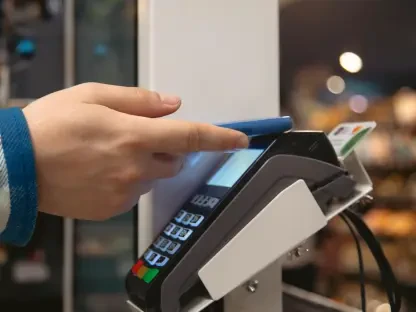The retail landscape is undergoing a profound change as it adapts to meet the evolving demands of modern consumers, who crave both the convenience of online shopping and the rich experiences offered by physical stores. Intersport Deutschland, led by CEO Alexander von Preen, is a perfect example of this trend, with plans to open 100 new stores that support the symbiotic relationship between digital and brick-and-mortar shopping. This movement is also reflected in the “2024 Global Digital Shopping Index,” which demonstrates a growing number of consumers who prefer to effortlessly switch between online and in-store shopping. A strategic transformation in retail is underway, signifying the necessity for a collaborative approach between ecommerce and physical stores to satisfy the changing preferences of shoppers.
The Rise of Click-and-Mortar™ Shopping
Click-and-Mortar™ shopping is a major shift in consumer behavior, marked by the desire to combine the ease of online previews with the tangible aspects of in-store experiences. The 2024 Global Digital Shopping Index provides insights into this trend, noting a 38% increase in Click-and-Mortar™ shoppers in countries such as Brazil, the U.K., and the U.S. since 2020. This surge departs from a purely digital approach, highlighting a consumer preference for more diversified shopping experiences. Retail companies are responding by merging online and offline elements to accommodate this need. Successful hybrid retailing requires crafting a seamless customer journey that does not break down, whether the consumer starts shopping online or in a store.Retail strategies are in flux as stores transform from simple points of purchase to key components of the omnichannel experience. Traditional retailers are refining their online platforms to boost in-store traffic, while online stores are finding ways to replicate the interactive nature of shopping in a physical location. The expansion of Click-and-Mortar™ shopping compels retailers to rethink and redesign these customer interactions, leading to more integrated and customer-focused retail experiences.
Driving the Trend: The Tech-Savvy Consumer Base
The evolution of the retail industry is heavily swayed by Gen Z and millennials, who demand a blend of online and offline shopping. This technologically adept cohort expects an omnichannel shopping path that includes digital research and physical store visits. Retailers are adapting to meet these expectations by developing digital tools that mirror the shopping experience offered in physical stores and modernizing their physical sites to provide the level of customization and convenience associated with online shopping. Utilizing technologies such as virtual reality and mobile apps is essential to create a uniform retail landscape. Retailers need to innovate constantly to satisfy a consumer base that craves both digital engagement and the physicality of traditional shopping.
Global Perspectives and Emerging Markets
While the shift towards hybrid shopping experiences varies globally, emerging markets like Saudi Arabia and the UAE are leading with modern retail infrastructures that integrate technological advances. These markets showcase the advantages of starting with a more contemporary base to meet new consumer trends. Conversely, more established markets such as the U.S. and the U.K. face the challenge of updating legacy systems to stay in step with the fast-evolving retail environment.Despite differences in retail foundations, there is a global move towards hybrid shopping experiences. Whether by updating old systems or building new ones, the retail sector is collectively recognizing the importance of embracing this new shopping model. The Click-and-Mortar™ approach is not a passing fad but a definitive evolution in the future of retail worldwide.
Implications for the Banking Sector and Broader Economy
As the retail sector shifts, so does the banking industry, as shown by UK FinTech firms like Zopa. The company’s CEO advocates a cautious stance on public listings, indicative of a larger financial prudence trend. Zopa has found profitability in concentrating on core offerings, a strategy that serves well during uncertain economic times.This adjustment is more than a simple trend; it’s a crucial tactic for businesses across various sectors. Integrating digital capabilities and centering on customer requirements have become fundamental practices. As previously separate industries begin to converge, driving innovation and customer engagement becomes key. This progression tells a broader economic story, where hybrid models gain prominence, originating in retail but expanding into banking and further, molding the essence of modern commerce and shaping consumer expectations.









